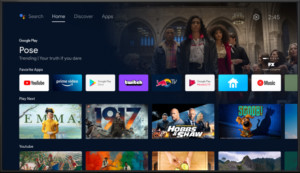Public Access Television: A Look Back and a Path Forward
Public Access Television, a cornerstone of community media, is facing an existential crisis. Once a vibrant platform for free speech and local programming, it’s now struggling to survive amidst legal challenges, dwindling funding, and the rise of digital media. This article explores the history of public access television, its current challenges, and potential solutions for a sustainable future.
From Grassroots Innovation to Funding Battles
Public access television, also known as community television or PEG (public, educational, and government access), emerged from the civil rights movement as a means to empower marginalized voices. Local governments mandated its inclusion in cable franchise agreements, requiring cable operators to provide channels, equipment, and funding for community-produced programming. This programming, ranging from hyperlocal news to eclectic individual productions, offered a unique platform for diverse perspectives and fostered community engagement. In the early days, robust public access provisions were often decisive in determining which companies secured lucrative cable franchises, highlighting the perceived value of community engagement. Significant investments were made by cable operators, sometimes exceeding $500,000 annually (equivalent to $1.8 million today), to support public access operations.
However, over time, cable companies have actively sought to eliminate or reduce these funding requirements, despite passing the costs on to subscribers. This has led to a drastic decline in the number of public access centers nationwide, from 2,500 in 1980 to just 1,600 today, according to the Alliance for Community Media. Many surviving centers operate on shoestring budgets, often less than $200,000 per year, significantly impacting their ability to provide quality programming and services. Further complicating matters, some local governments have intervened in ways perceived as hostile to public access, including taking over operations or even shutting down channels altogether, as seen in cities like Columbia, Missouri, and San Francisco.
A public access television broadcast in Atlanta exemplifies the type of local programming that these channels provide. (Atlanta City Council)
Navigating Governance and First Amendment Concerns
The question of governance raises significant concerns. Should local governments directly manage public access channels? While some argue for greater government involvement, assuming control raises potential First Amendment issues. Decisions regarding program content, particularly those involving potentially obscene or defamatory material, become more complex when made by government employees, potentially infringing on protected speech. Furthermore, conflicts of interest arise when city employees manage channels featuring content critical of local officials. A more appropriate role for local government lies in ensuring adherence to agreements with third-party operators, ideally through citizen oversight boards rather than direct governmental control.
Reimagining Public Access in the Digital Age
The rise of digital platforms like YouTube and Vimeo presents both challenges and opportunities. While many public access channels now stream online, bypassing cable altogether, the core principle of providing a platform for unfiltered community voices remains crucial. The need for a space where individuals can express themselves freely, without gatekeepers or censorship, is as relevant as ever. Rather than abandoning public access, a reimagining is necessary. Leveraging technology to create a more accessible and sustainable platform can revitalize this vital community resource.
Organizations like People TV, a non-profit media corporation, strive to provide resources and support for public access television.
A Call to Action: Building Public Access 2.0
Instead of taking over or closing down public access operations, local officials should convene committees comprising community producers, media professionals, educators, and technology experts. The goal: develop a plan that integrates the best of traditional public access with the potential of modern technology. This new platform should prioritize accessibility, sustainability, and the guarantee of free speech for all voices, even those considered unpopular. It’s time for Public Access 2.0, a revitalized platform that empowers communities and ensures the enduring principles of free speech thrive in the digital age. This revitalization should focus on developing new funding models, incorporating diverse digital platforms, and fostering community engagement to ensure the continued relevance and impact of public access television.








